Famous Dutch architect and urban design consultant Jan Gehl has presented a project aimed at improving Kazakhstan&rsquos largest city Almaty, Tengrinews reports.
Jan Gehl is a famous architect, who specializes in improving the quality of urban life by re-orienting city designs towards pedestrians and cyclists. After graduating from the School of Architecture at the Royal Danish Academy of Fine Arts in 1960, he met his future wife who was a psychologist, and since then the way he viewed city design changed. He began focusing on making cities more livable, creating an environment that people would find comfortable for living and would be happy to use.
Throughout his career, Jan Gehl worked as an urban design consultant all around the world including his hometown Copenhagen, New York, Moscow and London.
He first arrived in Almaty back in 2013. "Your city has a huge potential. It is good that it has wide streets; it means they can be divided into a pedestrian alley, cycling track and traffic road. I would like to point out that Almaty is a green city. Having a lot of trees is a huge advantage. But when I arrived there was a lot of snow and I didn't see anything green, however it is still beautiful. Talking with Almaty's Mayor I understood that cycling was being promoted in the city," Gehl said then.
Sharing the highlights of Gehl's recommendations to Almaty city, the architect's assistant Riccardo Marini said: "Almaty is a wonderful city. But it has some problems. We should first think about what we want the city to look like - should it be a city of high-speed motorways or a city for people. (...) Almaty wants to become a great city like New York. (...) It has a huge potential," Marini said.
He noted that more attention had to be paid to planting trees in the city and laying water channels.
The city should become more pedestrian-friendly instead of prioritizing cars that pollute the air. More pedestrian crosswalks should be created in the city's center, in particular on Al-Farabi Street, he said.
Indeed, making cities more convenient for pedestrians and bicyclers has long been one of the key priorities of Jan Gehl wherever he works. He believes that what truly matters is the interests of people themselves, who then decide what they want their city to look like.
In his book Public Spaces, Public Life he describes how incremental improvements has transformed Copenhagen from a car-dominated city to a pedestrian-oriented city over 40 years. One of the examples is Copenhagen's Stroget, a car free zone and one of the longest pedestrian shopping areas in Europe, which is largely the result of Gehl's work.
For Almaty, Jan Gehl also proposed to decorate the exterior walls of shopping malls located close to the pedestrian zones.
He recommended turning the Green Bazaar and Zhibek Zholy Street into historical sites and removing the large parking lot from Astana Square.
One of Jan Gehl's ideas was to create a special area in Almaty, where an ice town would be made in wintertime from the snow brought there from all parts of the city.
"The city center needs to be improved. It should have a good pedestrian network connecting all the main public sites of the city. The tram network should be made a historical site and serve not only as public transport, but also an attraction for tourists. The quality of the design of streets and squares should be improved, visual garbage (like billboards and posters) should be removed from the streets. The implementation of the transport development strategy should continue with creation of more dedicated bus lanes. Orientation in the city should be made more convenient," Marini said.
The project of making Almaty "a city for pedestrians" was presented to Almaty Mayor Akhmetzhan Yessimov. He supported the idea of making Almaty more comfortable for pedestrians, but said that the reality had to come first.
According to him, the city was not going to close entire streets for traffic and make them car-free pedestrian streets. "If we start working blindly in this direction, we will create chaos. People need to move, to get to work. We have identified a location for a pilot project (pedestrian zones) in each district (of Almaty). (...) But closing entire streets is out of the question. We are talking about creating places for people to enjoy their time and take a walk," Yessimov said.
The Almaty Mayor instructed the municipal officials to run an awareness campaign to explain the plan to the people and prepare them to the changes.
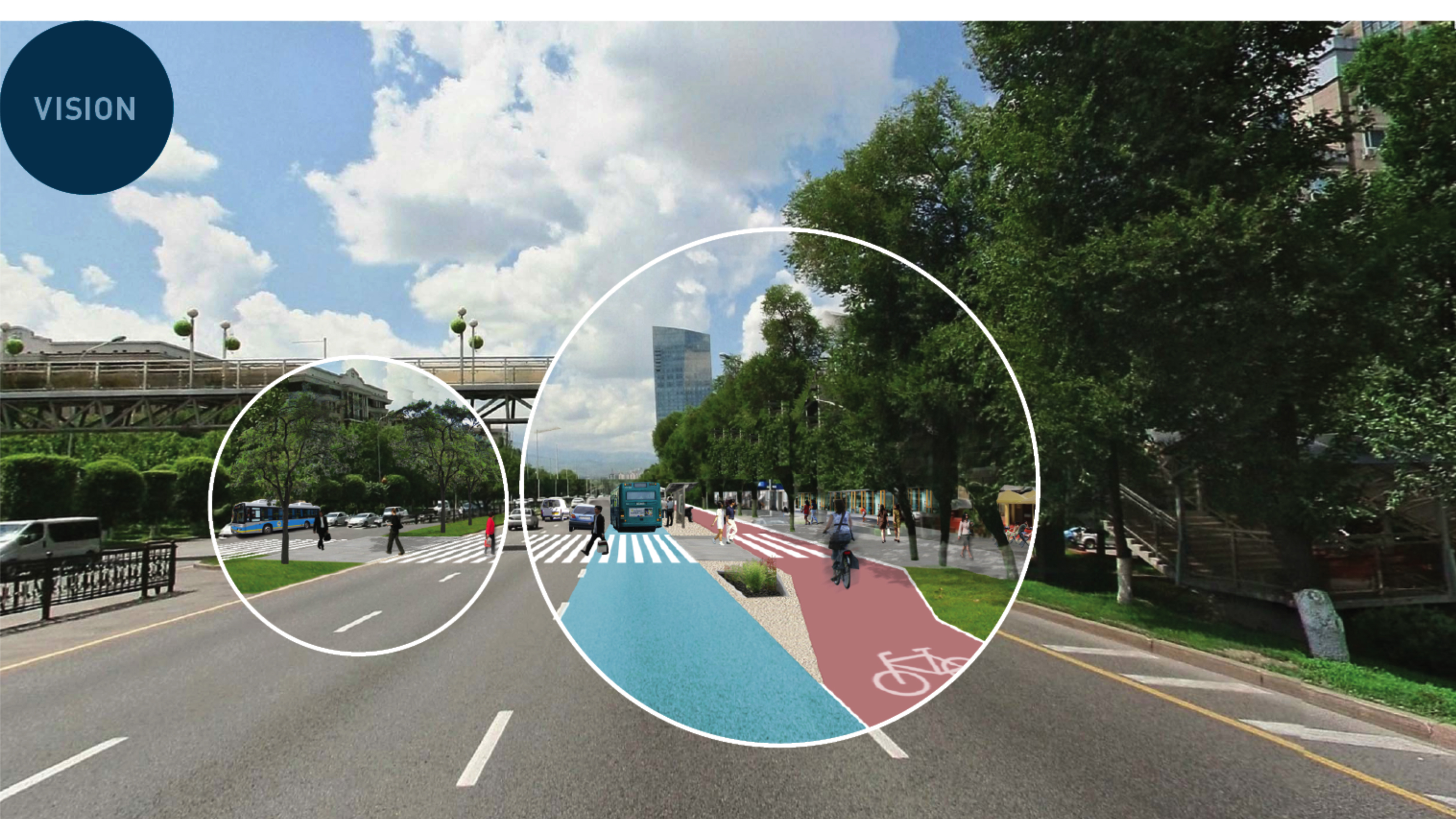
Al-Farabi Street in Jan Gehl's plan.
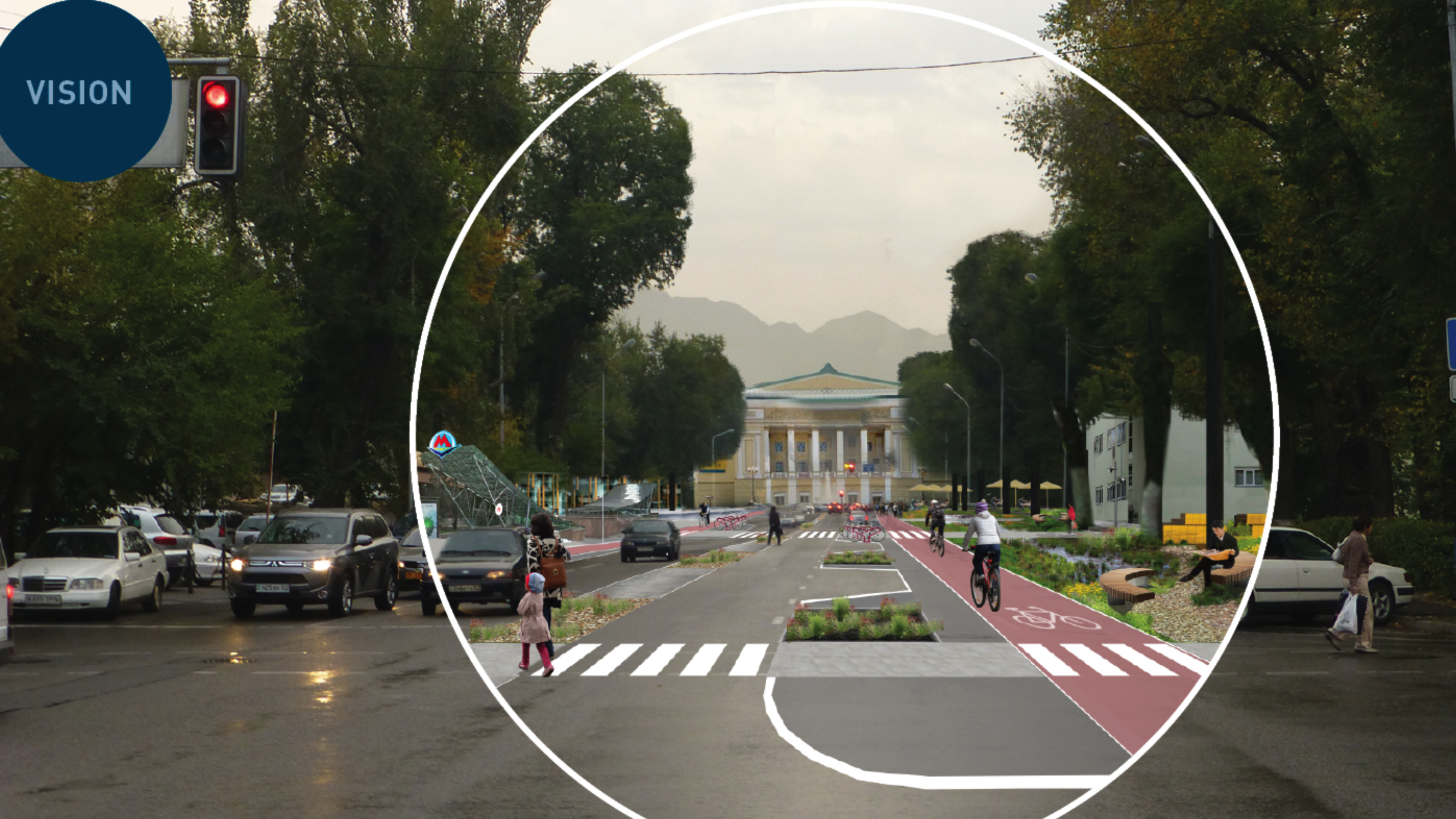
Panfilov Street.
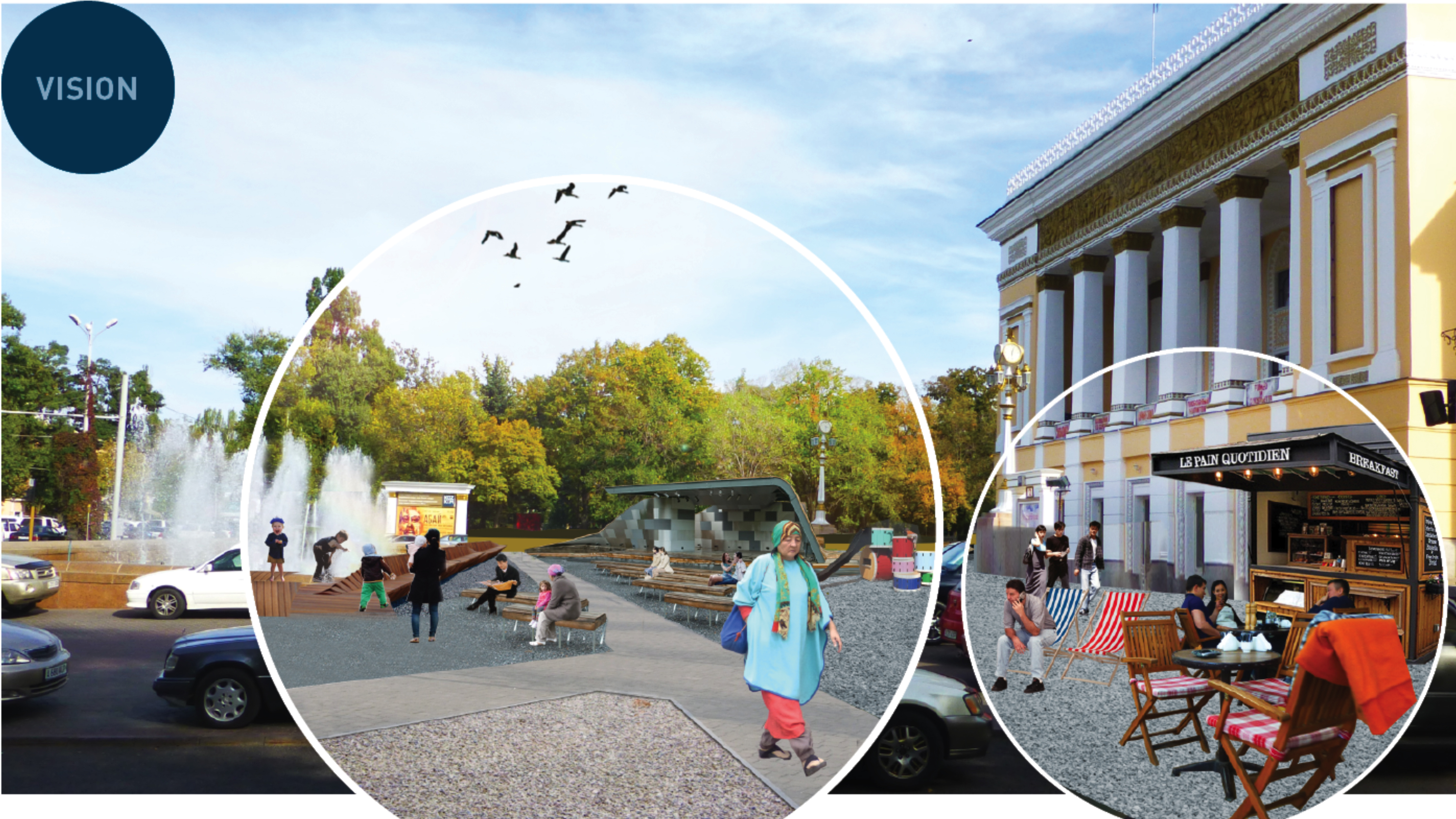
The square in front of the State Academic Theater of Opera and Ballet named after Abay.
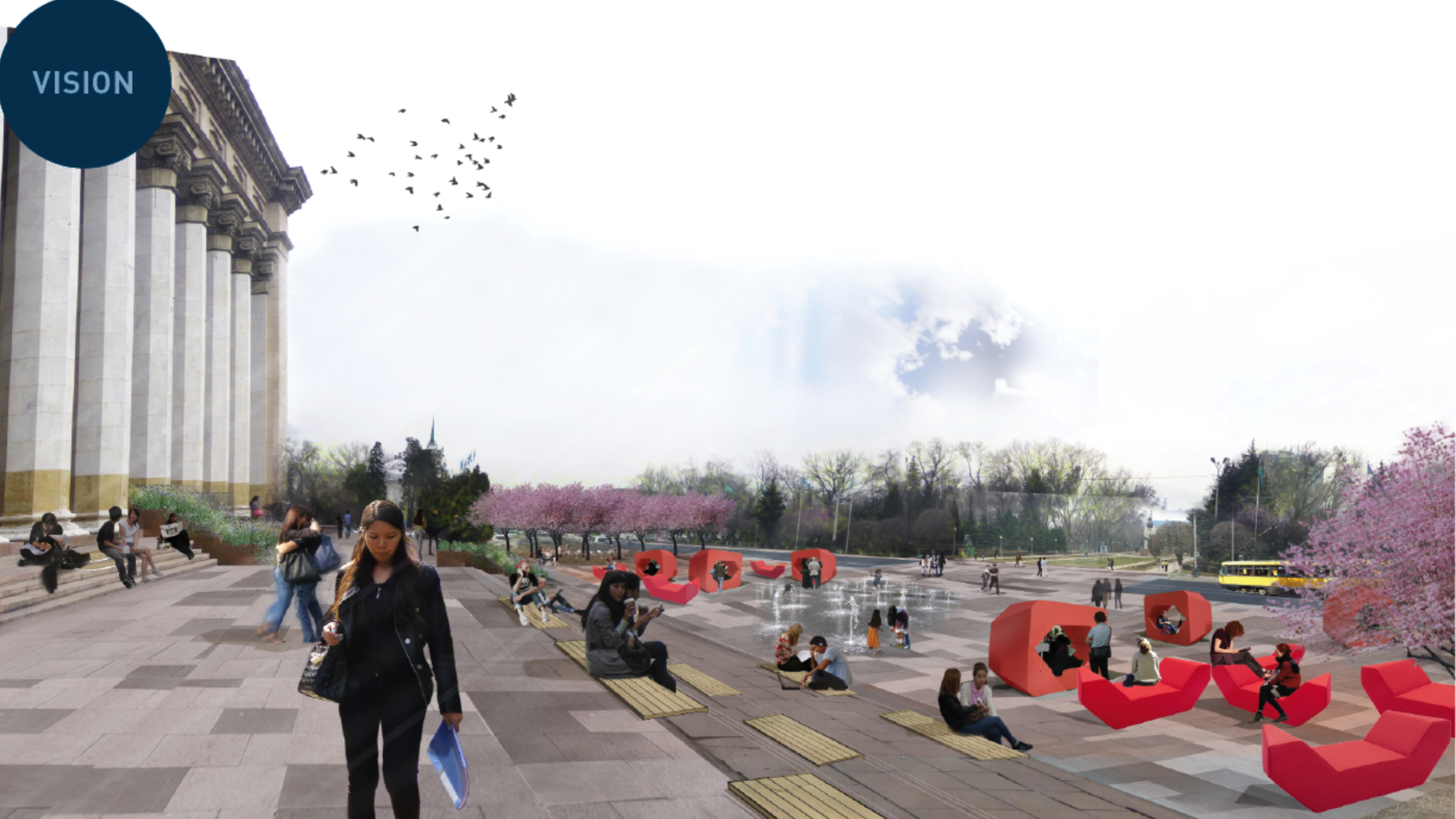
Jan Gehl's vision of Astana square.
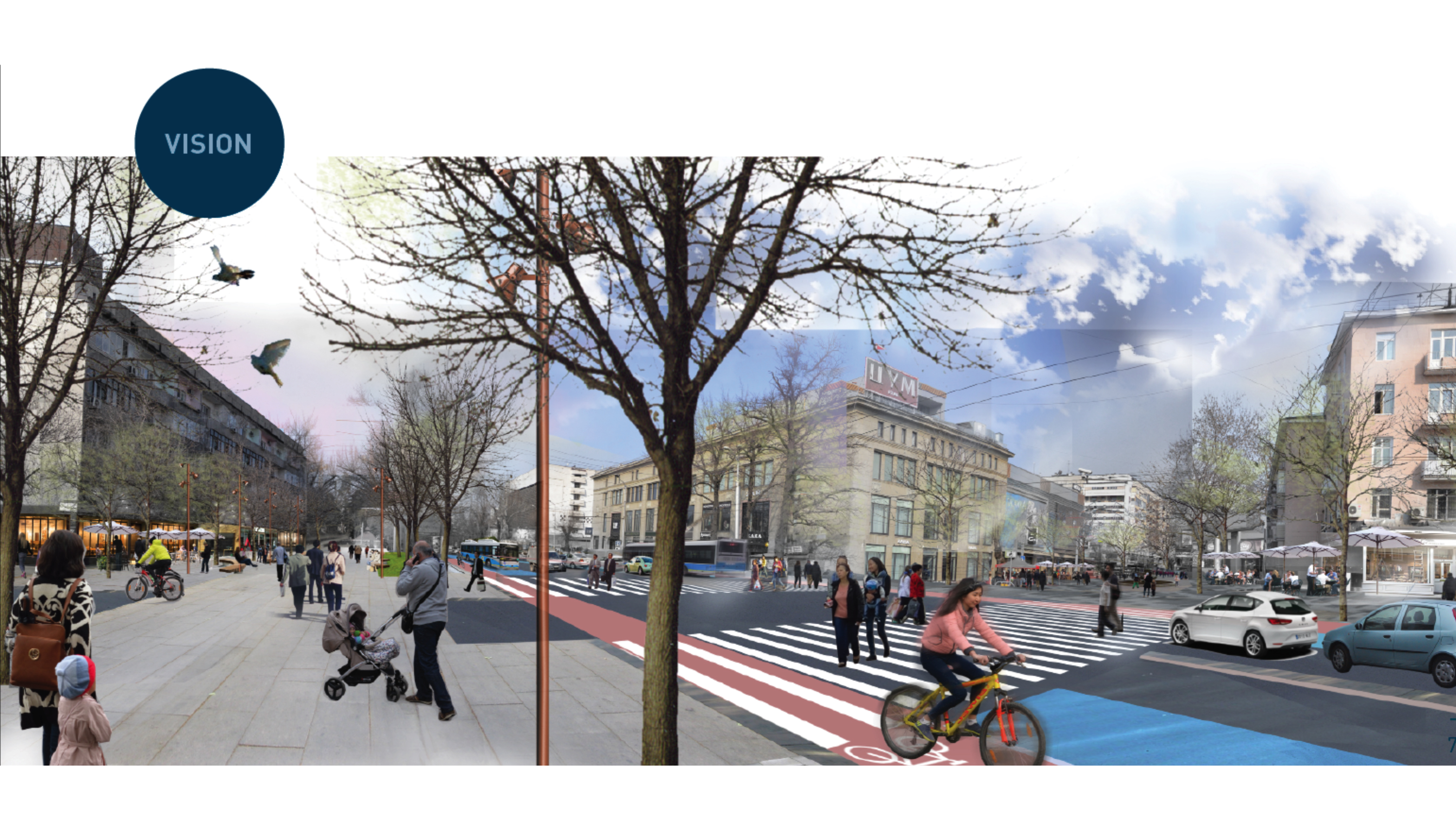
Abylaikhan Street in Jan Gehl's vision.
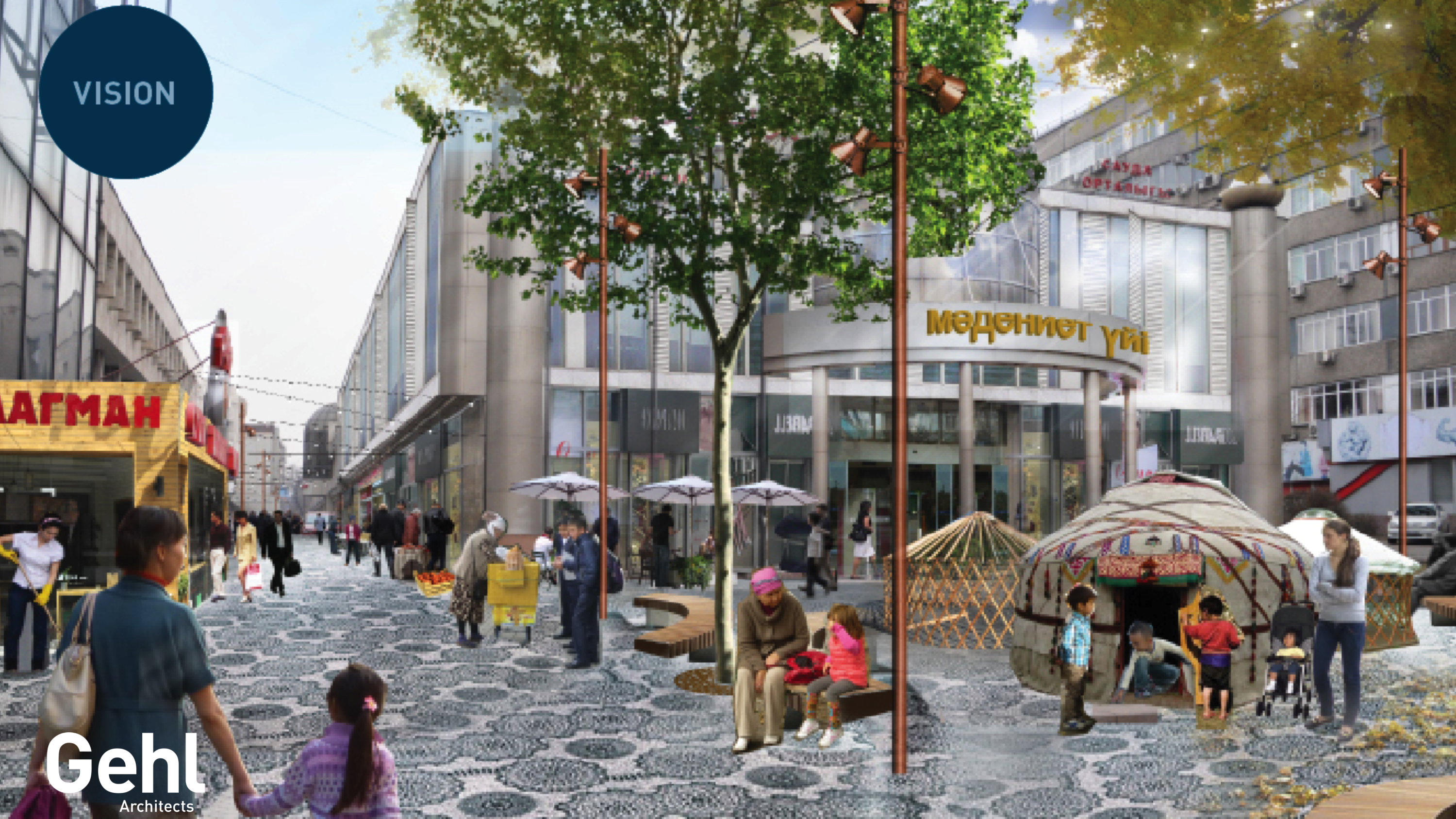
Zhybek Zholy Street in Jan Gehl's vision.
Writing by Assel Satubaldina, editing by Tatyana Kuzmina

